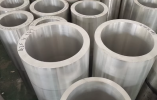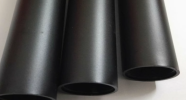IMHO, if you have to ask, you can't afford it. It's a cool solution, but you'll also need a CAD design where you'll provide the exact shape which will act as an adapter for attaching the cylinder to the driver, so ... Again, if you have to ask any question about the process, you can likely forget it, because not only is it going to be quite expensive for them to print and ship 18 adapters, 16 for the woofers and 2 for the coaxials, you'll also need to provide the 3D models to whatever company you'll be using. You're probably talking quite a few hundred bucks, maybe close to $1000, for
plastic? (50$ per part?) If you want metal, multiply by X?
And then, you still haven't attached those plastic adapters to the cylinder in some fashion, and since it's a sealed cabinet, well, it all needs to be sealed. The parts also need to be strong enough, so you'll have to to be careful about the exact plastic, the fill, etc.,
I'm sure you could find someone or some company to design the CADs for you, you'll likely have to pay a couple thousand dollars for that service also.
So yeah, 100% forget about that.



